Weed Grinders Under the Spotlight
Posted by DaySavers Team on Mar 27th 2025
Pencils need sharpeners, basketballs need air pumps, and cannabis needs grinders.
While natural cannabis grinders – human hands – can get the job done, the value of a cannabis grinder to new smokers and connoisseurs alike is the quick preparation of flower, even particle size, and hands that aren’t caked with kief. Whether you are filling your favorite pre-rolled joint cone or blunt tube, rolling your own, or preparing a bowl, bubbler or bong, a grinder will properly prep your bud for the optimal smoking experience.
But grinders aren’t perfect; ask any cannabis enthusiast. Nothing is more frustrating than a grinder made obsolete by caked-on oils, flower, kief, and the overall stickiness of cannabis buds. The lid of the top grinding chamber can easily become immovable due to the buildup around the outer ring of the grinder, leading to no movement and making it hard to separate. And that’s the last thing you want to happen when preparing for a session.
Grinders provide an even burn and better airflow for smoother draws, maximum potency through preservation of cannabis trichomes, easy rolling and packing, and an overall efficient use of your flower through proper preparation. But the range of grinder mechanics, number of chambers, size, material, special features, and more influence the experience greatly.
While the goals of cannabis grinders are the pretty much the same – producing a smokable state of cannabis – the variety of options surrounding this essential stoner kit tool is vast. Today we look at the makeup of the cannabis grinder, how they are structured, how they process the flower from buds to fluffy, even particles, their features and what to do in a no-grinder situation preparing for your next ritual smoking of the cannabis.
Table of Contents:
- Why Use a Grinder for Your Weed
- How to Use a Weed Grinder
- How Does a Weed Grinder Work?
- Multi-Chamber Weed Grinder
- Weed Grinder Material Types
- Nifty Features of Weed Grinders
- How to Clean Your Weed Grinder
- Highlighting Quality Grinders on the Market
- How to Choose the Right Grinder
- How to Grind Weed Without a Grinder
Why Use a Grinder for Your Weed
A bud of cannabis can range from little popcorn nugs to massive, thick, long buds that have the outer portion exposed but not the inside, creating limited surface area for the combustion process. Processing your flower buds in a grinder breaks apart the bud, creating smaller particles with more aggregate surface area to create an even burn and efficient, smokeable cannabis. Grinders also break down or keep stems from causing issues in the preparation process, like pocking through your rolling paper when being rolled into joints or packed into pre-rolled cones.
Larger particles burn slower and at a lower temperature due to the lower amount of surface area than a finer grind, affecting the smoking experience and potential waste due to uncombusted flower in the middle of the large particles. Smaller particles offer quicker, more even pulls, a fuller pack and even distribution of flower for an overall better experience. It even enhances the potency of flower due to a greater pack density and surface area, allowing for more effective extraction for more potent consumption.
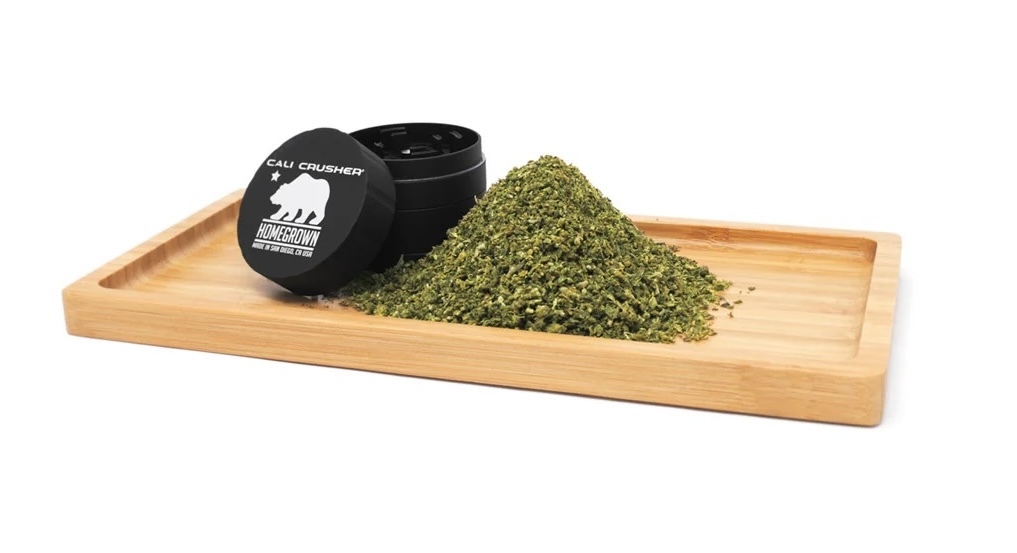
Breaking down buds with your hands creates a sticky situation, large, uneven particles, and a looser pack that can leave your pre-rolls with air pockets that can create hotspots leading to canoeing, or an uneven burn. It can also cause skin reactions in those sensitive or allergic to certain plants.
Plus, if you’re working at scale – say rolling up a bundle of joints for a weekend in the woods camping – the time it takes to properly break down the cannabis adds up, taking far more time than using a grinder.
How to Use a Weed Grinder
Cannabis grinders are used by consumers and producers alike, and while the grinding mechanisms may vary, the goal is the same: produce evenly ground cannabis particles while retaining the integrity of the flower. Producers use large machines that can process over 500 pounds of flower per hour, which is wild.
But for the consumer, common disk grinders that rotate back and forth in a circular motion are the standard. Automatic, electric grinders are also available to take the manual rotation out of the process, employing a motor to power the grinding mechanism.
To prepare your flower for the grind, you may need to break the buds down into a manageable size not only to fit in the grinder, but for optimal performance. Large buds can get crushed and compacted which makes the process of grinding more difficult and affects the quality of your ground weed.
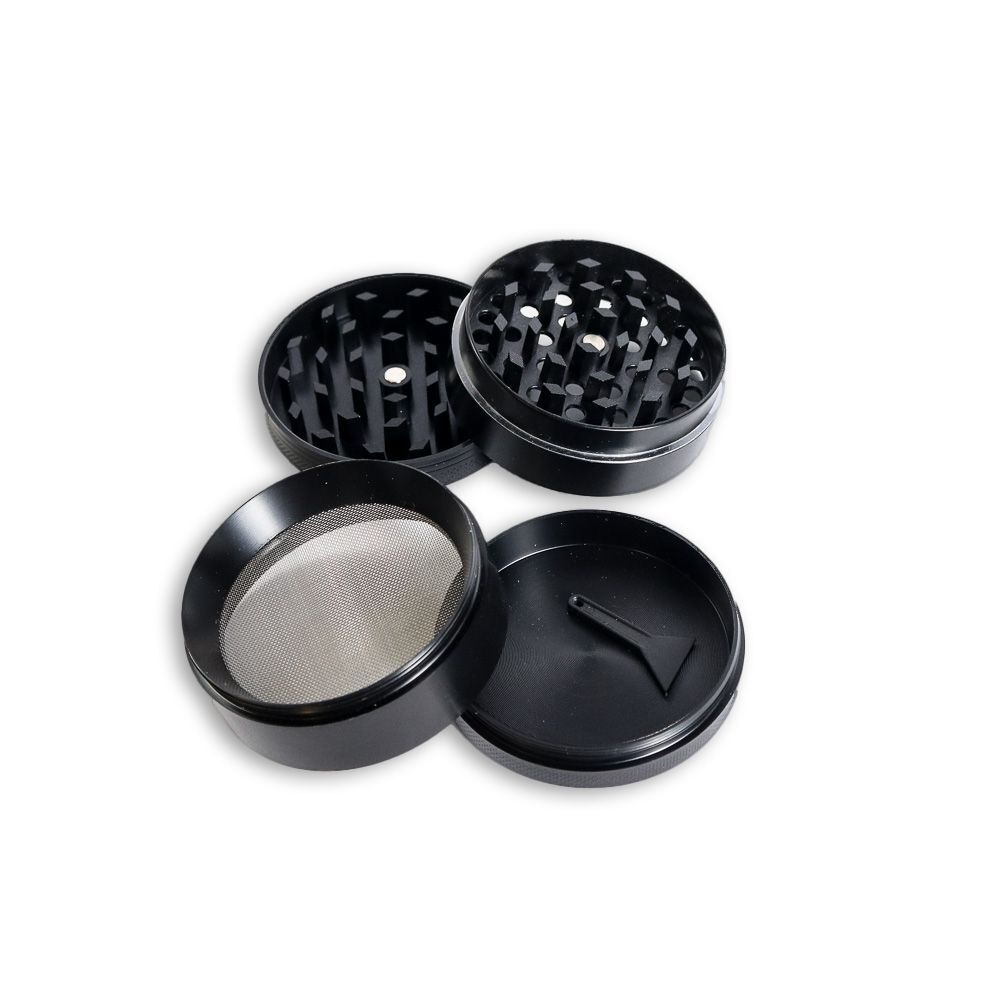
First, place the prepared buds inside the grinding chamber of your grinder without overfilling, which can cause an uneven grind and strain on the teeth.
Place the top half of the grinding chamber on top of your buds in the lower grinding chamber, apply slight pressure, and begin rotating the top piece of the grinder clockwise and counterclockwise. As the grinder does its thing, the ground flower will fall through the screen to the next chamber in evenly sized pieces. If you prefer a finer grind, simply flip the grinder upside down so the particles fall back into the grinding chamber and grind upside down so the flower particles can be reground.
For a two-piece grinder without a third chamber for the weed to fall in, excessive rotations during your grind can over shred your buds and leave you with a grinder full of cannabis dust or teeny-tiny particles that can leave you with wasted weed or worse, Scooby Snacks in your mouth.
Once the flower is ground, you are ready to collect the herb, load it into your favorite papers or piece and send yourself and your friends to the clouds.
How Does a Weed Grinder Work?
Shredding with Teeth
So how does a weed grinder work?
Grinders with teeth use protruding shredders in the top two chambers of the grinder that are spaced in a way that allows the two pieces to turn, grinding up the weed when the teeth pass by each other. When the two grinding chambers are rotated back and forth in clockwise and counterclockwise motions, the plethora of teeth tear the bud into small particles that get smaller with every turn of the grinder.
Teeth grinders by far are the most common consumer grinders on the market as they have a long history in the cannabis space, from large scale processing to small scale preparation. The reason for this is simple: the mechanics are sound. Similar to the blades of a pair of scissors, the passing teeth cut the bud into smaller pieces with every turn. And while the mechanics of toothed grinders is consistent among this style, the layout and shape of the teeth can differ greatly from brand to brand.
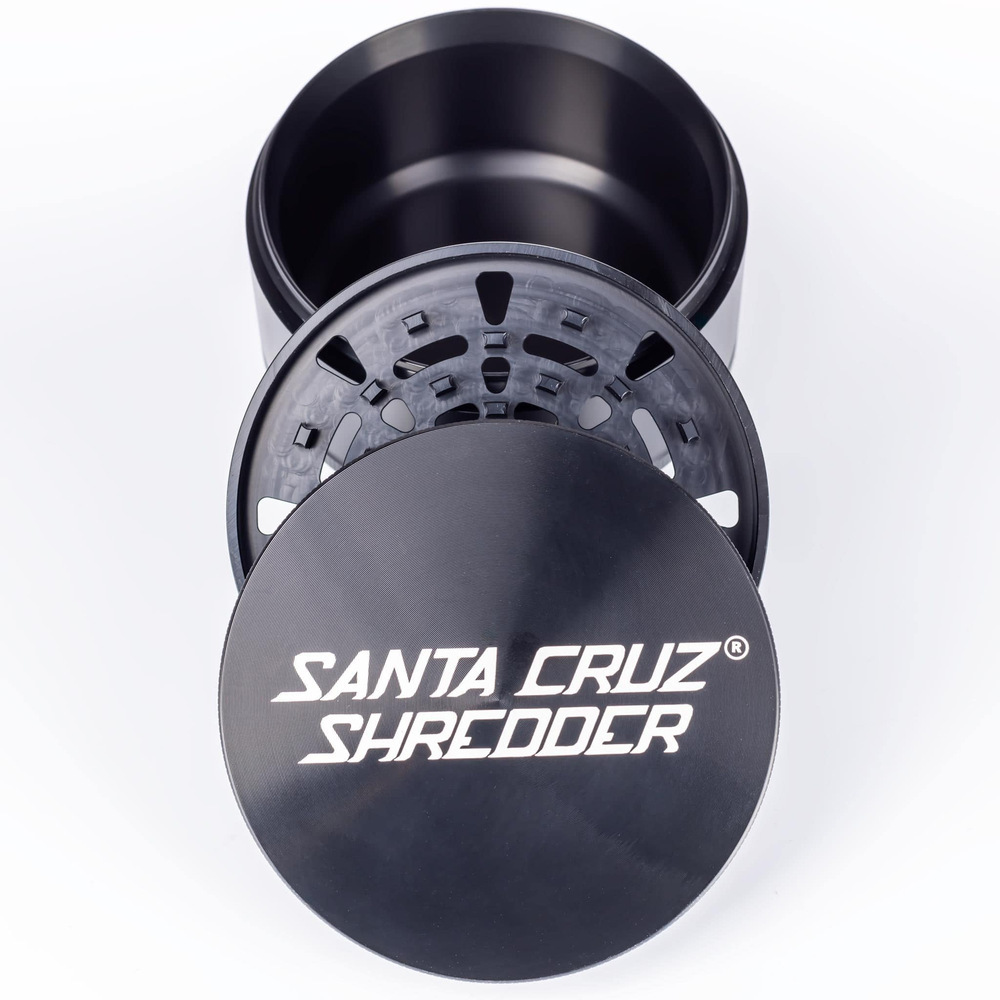
These grinders often contain a large number of teeth, which can make loading flower more difficult than a grinder with fewer teeth or more space withing the grinding chambers. This can cause high pressure when starting your grind, causing buildup on the teeth or around the outer edges of the chamber (both the internal and external side) and causing friction that can eventually render your grinder immobile. Flower can also get pressed into the center of the grind where a magnet is often found to keep the two chambers together.
Diamond-shaped teeth are the most common among grinders. They provide consistency, fine particles, and fluffy processed cannabis. Square teeth are efficient and effective in creating a coarser grind, make it a great option for bowls, though the particle size may be too large for joints and blunts. While often less sharp than diamond teeth, square-toothed grinders get the job done with efficiency.
Crecent moon teeth, elongated with far more length than width are often found in higher end grinding products due to their ability to shred rather than crush the flower.
Blunt teeth and small rounded teeth can ground the flower without shredding and potentially damaging the highly potent trichomes, often producing a fluffy end product with medium to large buds.
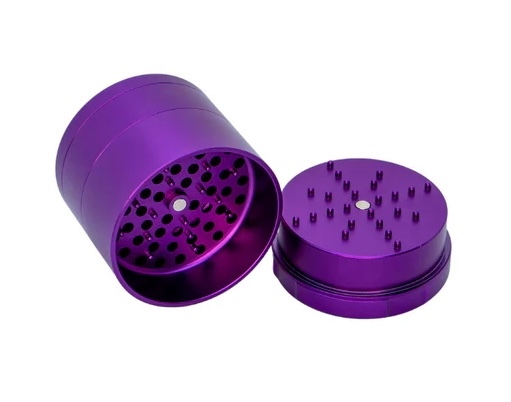
Particle size is important when it’s time to light up. Finer grinds are more ideal for pre-rolls while larger particles are ideal for bowls. Smaller blunt teeth will require less of a gap between the two grinding chambers because the teeth are shorter and need to be closer to each other to begin the grind.
Whether you’re grinding or shredding your flower, more rotations will produce the smaller particles good for rolling and smoking joints, while controlled grinds with less rotations produce larger particles ideal for pipes and bongs. And while buildup can cause a grinder to stick, remember that we are working with cannabis containing sticky trichomes that dictate the potency and effects, flavor and aroma. When you ignite it, the resin produced from the combusted cannabis sticks to the glass and creates a dirty buildup of sticky resin. This is similar to pre-combusted flower that contains the resin-causing trichomes that in their original state are also sticky.
Proper use of a grinder will delay the build up of gunk, but before you curse your grinder when your ground weed is locked in the grinding chambers, just know that every grinder experiences buildup and it is able to be removed with a quick clean.
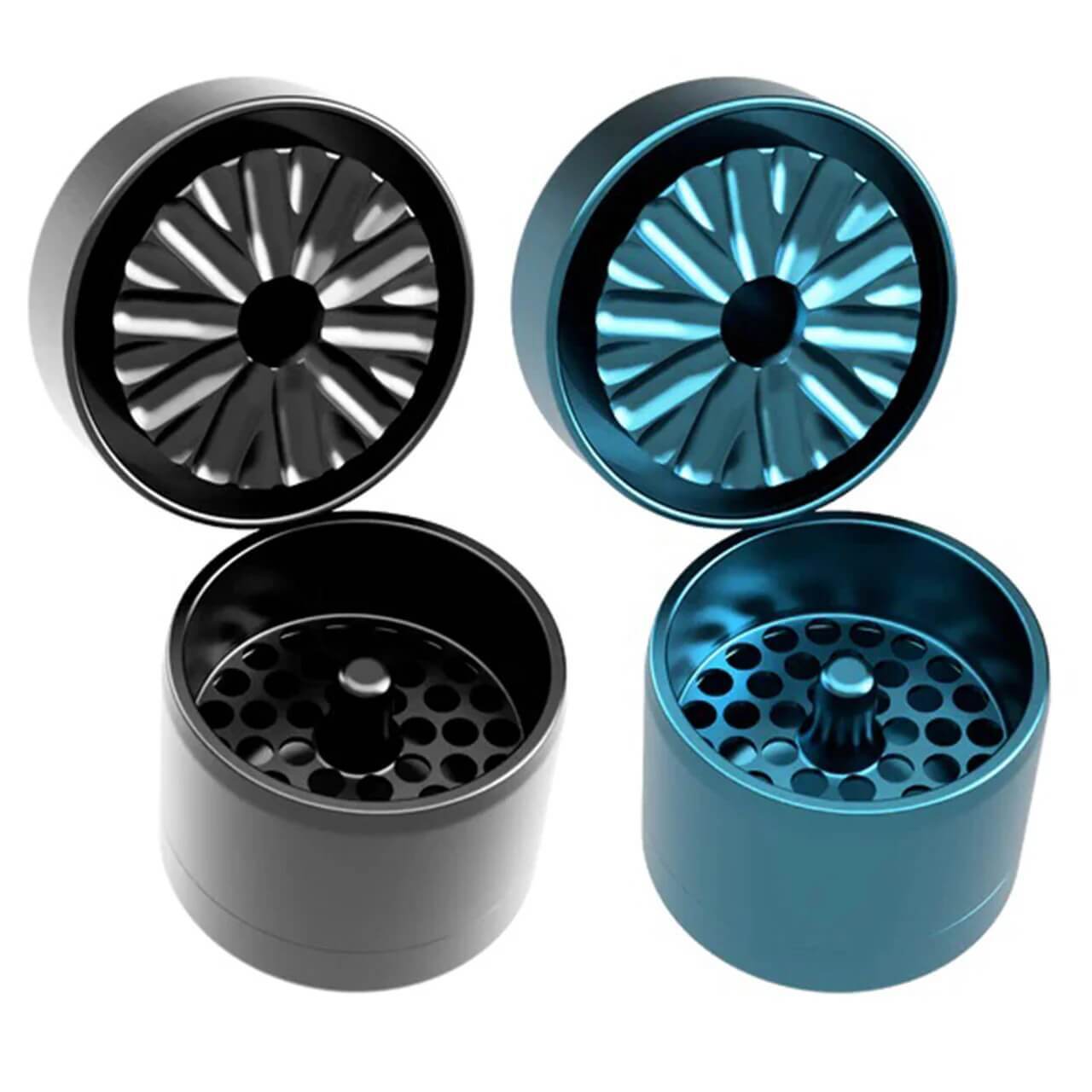
Cannabis Mills
Newer to the grind game is the food mill-style device that does contain teeth. Instead it contains a grooved, or fluted, upper grinding chamber that uses pressure and rotation to push the flower between the top grooved chamber and the lower screen to send the ground particles from the grinding chamber to the storage chamber below. The center rod of the lower grinding chamber protrudes up and meets the center of the upper piece with a magnet that allows for smooth rotation and a stronger connection between the two chambers.
Mills, championed by the Flower Mill brand, require little pressure and produce fluffy ground particles that will vary in size depending on the size of holes in the lower chamber screen. Larger holes allow the flower to drop to the storage chamber earlier than smaller holes, which require more rotations to achieve the smaller particle size. For larger particle screens, simply turning the grinder upside down will send particles from the storage container back to the grinding chamber where gravity can’t pull down the particles as easy allowing for further grinding and a finer flower grind.
Multi-Chamber Weed Grinders
Grinders range in size, function, features and chamber count, all affecting the grind and the makeup of the ground flower. While 2-piece grinders with only one chamber get the job done, they lack the capabilities of multi-chamber grinders that alter the state of the flower as well as the function and value for the user.
The Simple 2-Piece Weed Grinder
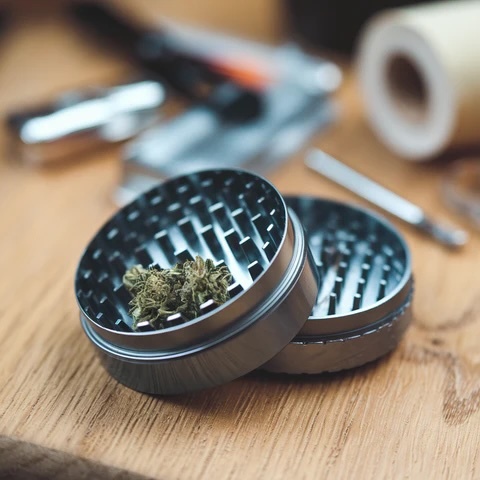
Let’s first look at the two-piece, single-chamber grinder. Basic in construction and function, 2-piece grinders contain an upper grinding chamber and a lower chamber and that’s it. This allows for continuous grinding because the weed doesn’t drop through a grate into a storage chamber, which is fine when you’re using your flower right away but makes saving bud for later a harder task.
But for instant use of your ground flower, the 2-piece grinder can speed things up as simply separating the grinding chambers releases the flower quickly, while multi-chamber grinders move bud through parts that require detaching the storage chamber from the lower grinding chamber, adding an additional step, though admittedly a quick and simple one.
Two-chamber grinders also trap the full stickiness of the flower in the toothed chambers, causing quicker buildup of sticky trichomes on teeth and points of connection between the upper and lower grinding chambers. With the release of flower into a storage chamber, buds undergo far less pulverizing in the grind chamber, reducing build up that will eventually make chambers stick to each other.
The Efficient 3-Piece Weed Grinder
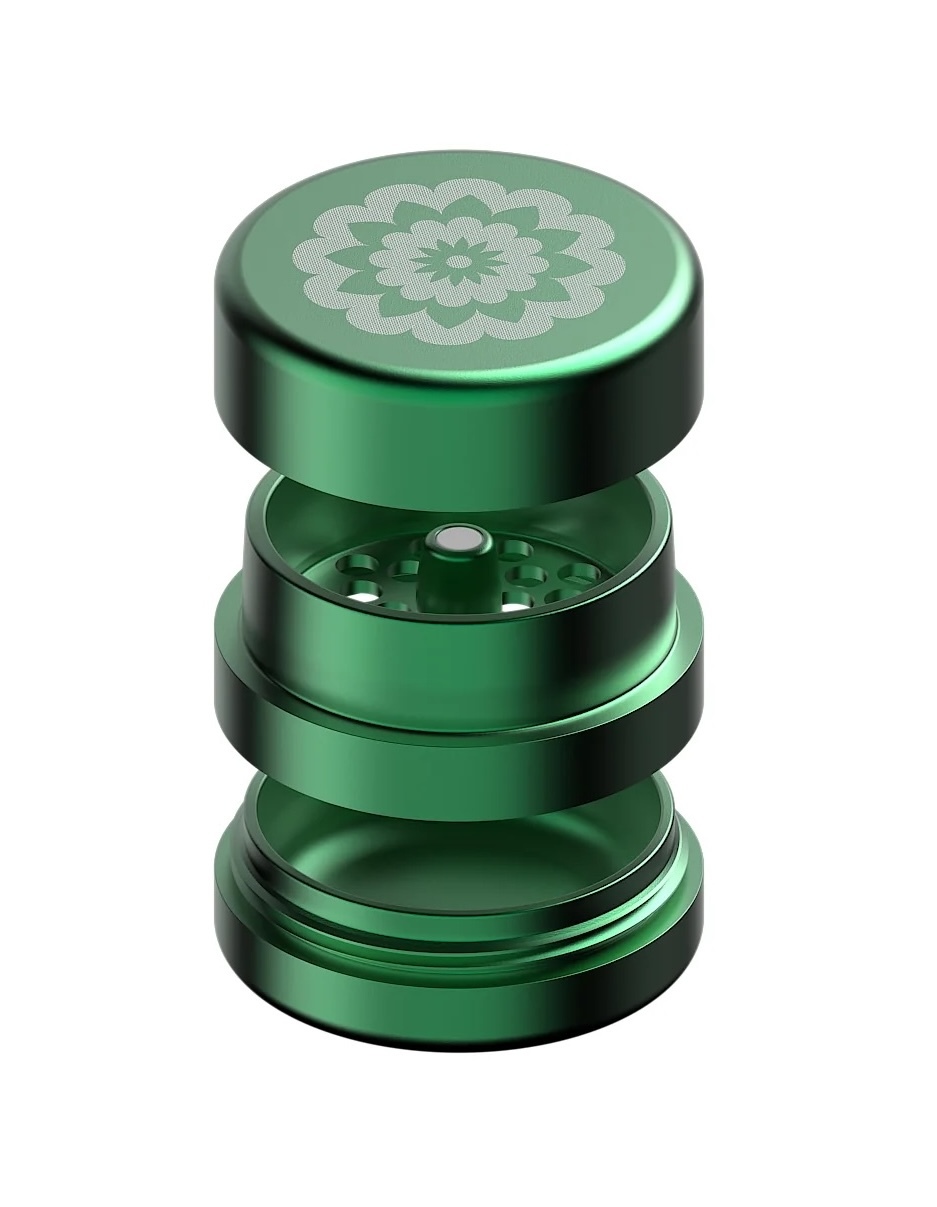
A 3-piece grinder adds a screen and catch/storage chamber below the grinding chamber.
A storage chamber provides, well, storage for your ground flower, allowing you to save your smoke-ready grind for your next sesh in a closed, secure chamber for easy portability.
But it’s the grate at the base of the lower grinding chamber that is key here. The grate allows only ground flower of a similar size to fall to the storage chamber producing a consistent particle size. However, the large holes in the grate may create a grind that is not favorable to your consumption method. However, simply flipping your grinder over allows the flower to flow back to the grinding chamber where it can be further ground into a finer product.
One thing to note about 3-piece grinders is that the kief created from the release of trichomes during the grinding process will remain with the flower in the storage container. This creates sticky, potent cannabis particles by retaining kief in your ground flower when passing from grinding to storage. As a result, buildup can occur in the storage chamber which will require cleaning of the lower chamber from time to time, though because the buildup is highly concentrated kief, it can be chipped off and added to your flower for an infusion of flower and concentrated THC.
The Complete 4-Piece Weed Grinder
The addition of a chamber beneath the storage portion of the grinder, separated by a fine screen, allows for kief to fall into the additional storage container which keeps it from accumulating in the storage chamber. The kief chamber, however, does reduce the potency of your ground flower by losing trichomes to the kief catcher. But the kief is smokeable, of course, so it can be incorporated in bowls, joints and blunts for added infusion of concentrated THC.
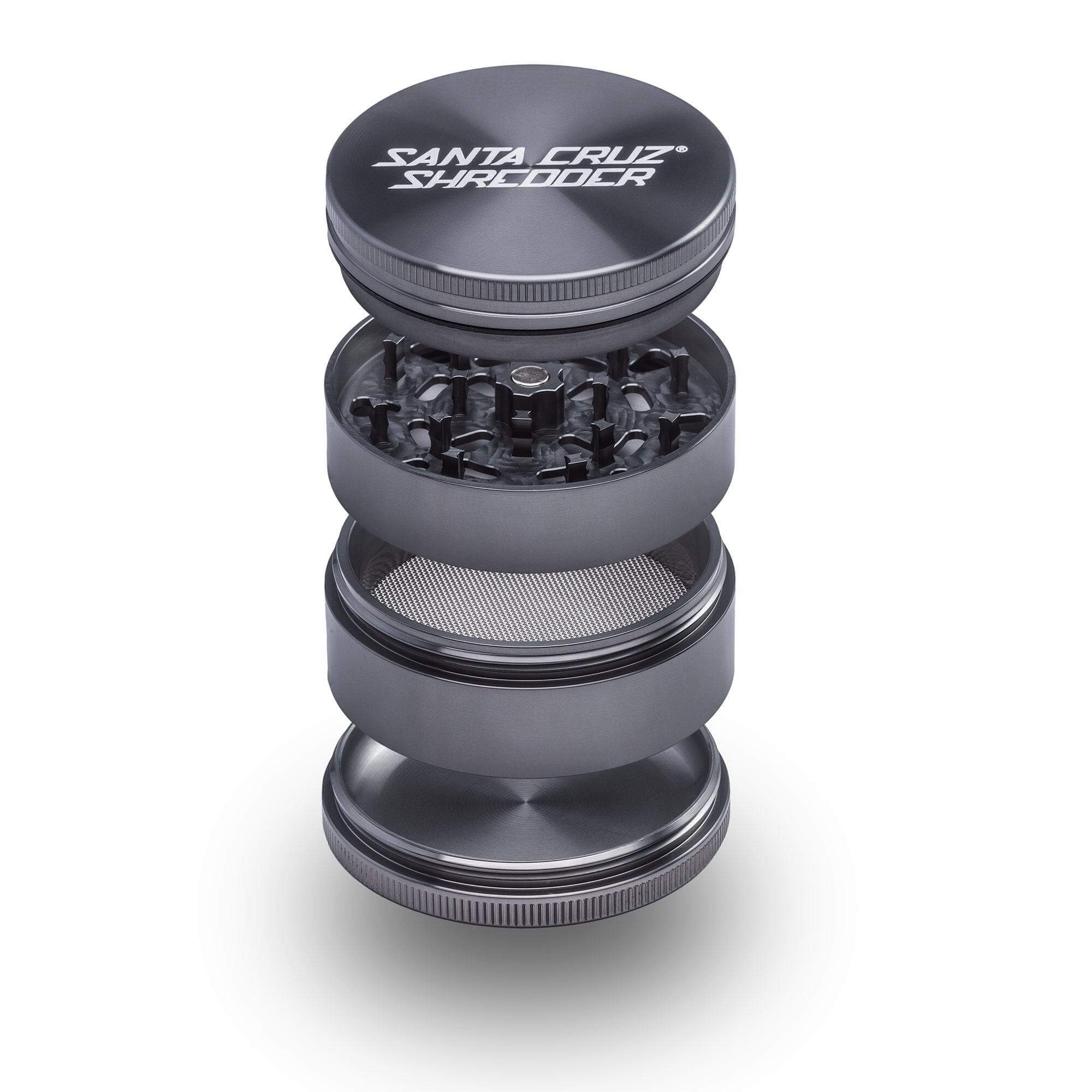
Higher quality bud often creates more kief due to the increased presence of terpene and cannabinoid containing trichomes, while lower quality bud has fewer, producing lower levels of kief. Well-cured cannabis retains its trichome structure better than old or over-dried cannabis, and a kief catcher allows the bud to become fluffier due to the removal of resinous trichomes that add weight and containment of the ground flower.
In 4-piece grinders, as well as 3- and 5-piece, the ability to adjust grinder chamber screens for larger or smaller particles can be incorporated through removable grates. With 4- and 5- piece grinders, that ability also applies to the kief screen, where larger holes will capture more kief and smaller screens will keep more kief around your ground flower.
Another nifty feature of the 4-piece grinder is its ability to convert into a 3-piece grinder with the simple removal of the kief screen. Sometimes separating the kief is favorable while at other times it is advantageous to keep the flower and the trichome filled kief together to keep the aroma, flavor and potency of the terpenes intact.
The Deluxe 5-Piece Weed Grinder
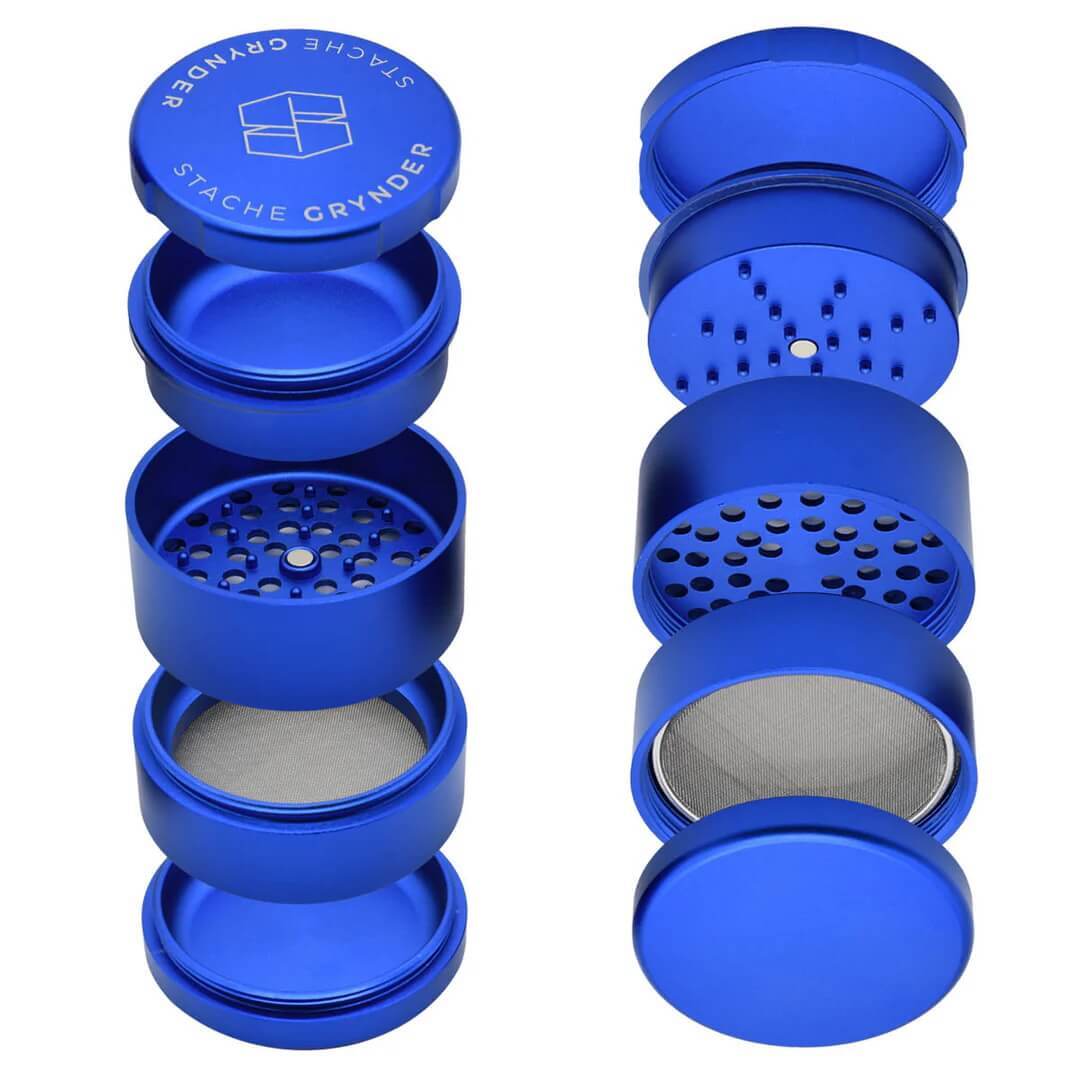
A 5-piece grinder may sound a bit excessive, but the convenience of an additional chamber adds functionality and additional storage capacity for future use of your ground bud. The addition of a second storage chamber, often added to the top grinder chamber, allows users to save more bud for the next sesh, and keeps the flower safe and contained. While this adds a little size and bulkiness to the grinder, for the serious toker, the added chamber provides ease of use for your next roll or bowl.
The fifth part of the 5-piece isn’t always just for storage, an extra screen with larger gaps can sit above the usual single kief screen to catch what is essentially shake, small particles that aren’t trichome-y kief. This allows for cleaner kief and another an additional layer of fine particles ready to use.
So while 2-piece grinders get the job done, 3-, 4-, and especially 5-piece grinders have features that make the overall preparation experience convenient and easy.
The Extreme 6-or-More-Piece Weed Grinder
While far less common than the previously mentioned grinders, 6-or-more-piece grinders add to an already complete grinder. Imagine a grinder with a kief tray, kief screen, a larger particle screen to keep shake out of your kief, cannabis chamber, and two pieces making up the grind chamber. Boom; we’re already at 6 pieces. Now consider the other options that could take a 6-piece grinder to the next level with more pieces.
The top grinding piece could have a removable lid that houses extra ground flower, the cannabis chamber can have an additional cylinder piece that adds height and capacity to the ground cannabis reservoir. And now we’re at 8 pieces. Is that overkill or luxury? Who’s to say?
Weed Grinder Material Types
Along with the options of grinding mechanisms and number of chambers available, an additional option makes up the final choice option for the build of your grinder, the physical material that makes up the grinder.
Grinders come in a range of options including metal, acrylic, wood, hemp and even glass. While all will get the job done, some will perform better than others.
Metal Weed Grinders
Aluminum Cannabis Grinders
The most common and effective grinders on the market come in metals of varying elements. Aluminum grinders, often used in lower-priced offerings, provide a solid option for grinding as they have sharp, durable teeth that are less prone to resin buildup, and break down cannabis without crushing it. But remember what we mentioned earlier, the need to clean a grinder will eventually come whether you are using a glass two piece grinder or a 3-piece metal mill grinder.
There are different grades of aluminum used in grinder construction that affect their durability, appearance, and of course, price point. From anodized aluminum to aerospace-grade aluminum, these grinders are sturdy and lightweight, though we recommend avoiding raw aluminum, as the integrity of the metal is not intended for long-term use.
Stainless Steel Weed Grinders

Stainless steel provides a high-quality alternative to the standard aluminum grinder, as aluminum is soft and malleable and over time, the grinding teeth will dull and be less effective. This also translates to the threads and body of the stainless steel grinder as well, as aluminum grinders are more susceptible to wear and tear while stainless steel grinders are extremely durable, which will often translate to a more expensive price point for the premium metal used in production.
Stainless steel is also resistant to corrosion, making these grinders an optimal choice for long-term use.
Titanium Weed Grinders
Available in both titanium-coated and solid titanium varieties, these grinders set the standard for durability, resistance to scratches, dents, and dulling, and are lightweight despite their resilience. Similar to stainless steel, titanium is highly resistant to corrosion, ensuring the integrity and structure of the grinder. With higher quality often comes a higher price tag, and the titanium grinder is no different due to the higher quality metal and it’s unique properties.
Also, since titanium grinders cannot be anodized or coated with a protective oxide layer like the traditional aluminum grinder, color options may be limited. Regardless of this, titanium grinders set the bar extremely high and should be considered a premium grinder option.
Plastic and Acrylic Cannabis Grinders
Grinders made with a plastic or acrylic are often inexpensive due to low-cost material that can dull, crack or break completely over time. Plastic and acrylic grinders have also been known to produce microplastics that can pollute the freshly ground flower due to chips in the grinders form, often stemming from chipped plastic teeth.
Most often produced in a 2-piece construction, the versatility of plastic and acrylic allow grinder manufactures the opportunity to build unique grinders with a range of customization options not easily replicated by metal grinders.
For the price, plastic and acrylic grinder are very accessible, with price tags as low as a few bucks, so if there is an issue with your plastic or acrylic grinder, low cost replacements can solve the issue while keeping a bunch of cheddar in your pocketbook.
Hemp-Based Grinders
What better way to grind cannabis than by keeping it in the family using a hemp-based material to fashion the grinder? Constructed using hemp plastic to bind the material or a 100% hemp-based grinder using all-natural hemp and a hemp-based binding agent, hemp-derived grinders are surprisingly durable, 100% biodegradable, and come in a variety of sizes from 2- to 5-piece. Hemp grinders are a lightweight option that are ecofriendly and provide an even, fluffy grind every time.
Plus, when the time comes to replace your hemp grinder, you can feel comfortable throwing them away because of their biodegradable build. Boasting a very friendly price tag, these grinders are available in a wide variety of sizes and colors and are a perfect, lightweight option for grinding on the go.
Wooden Weed Grinders
Less common but functional nonetheless are grinders crafted from 100% wood, or a combination of metal and wood, with the wood portion often being the casing for the metal internal components. Wooden grinders often contain metal, narrow pegs as their grinding mechanism, but the variety of teeth can range from small blunt teeth to classic teeth of varying shapes. These metal pegs tear the flower rather than grind it which can create a rougher, less even grind.
Wooden grinders are also unique as the wood grain and stain will vary from grinder to grinder, in contrast to metal, plastic, and hemp grinders that produce consistent grinders of the same physical makeup. Due to their porous nature, wooden grinders may absorb oils and resin from the cannabis moving through the unit, adding a level of difficulty to the cleaning process.
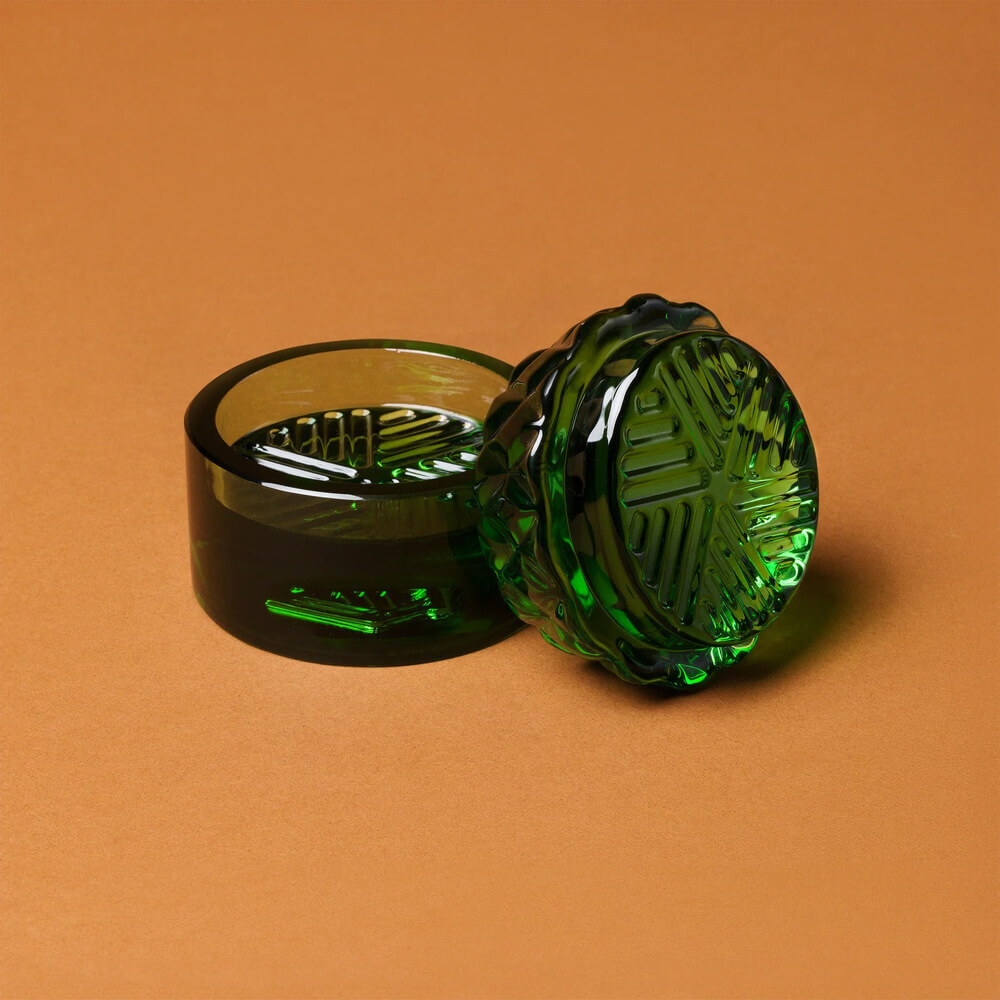
Glass Grinders
While some grinders employ a glass base to collect the ground bud, grinders made exclusively from glass are available on the market, though options are limited. It may seem like glass grinders would be fragile, and while more fragile than most grinders, they are far tougher than the flower itself so breakage will often come from user error in the form of chips from aggressive use or complete breakage from dropping the grinder.
Seth Rogan’s cannabis adjacent brand Houseplant features a 2-piece borosilicate glass grinder with flat grinding patterns on the internal top and bottom, creating a mill-like grind inside the beautifully crafted glass grinder. While the grinder carries a price tag nearing $100, the aesthetics and the celebrity behind the brand make the Houseplant Glass Grinder a luxurious, functional product for processing your bud.
Electric Weed Grinders
For the smoker who prefers speed and ease comes the electric grinder with a range of features, grinding mechanisms, and aesthetics. These battery-powered grinders often have transparent casing around the storage compartment and grinding mechanism, allowing you to grind your buds to the desired consistently. And after, all you need to do is empty the cannabis reservoir into your rolling paper, storage container, or wherever your ground bud is needed.
The most common grinding mechanism employed by electric grinders are blade-based, similar to a blender or coffee grinder. Milling is also a common method of grinding, as well as burr grinding that uses abrasive surfaces to crush the cannabis flower between them. Hammer mills that use protruding hammers or impact blades to slice cannabis into uniform particles is also an effective way to grind.
But no matter the grinding mechanics, electric grinders speed up the process, contain the mess, and allow the user to monitor particle size through a transparent casing, with a longer grind time yielding finer particles than shorter grind times.
Nifty Features of Weed Grinders
Weed grinders have evolved over the years, adding technology, sophistication, performance-enhancers, and customization for cannabis aficionados to up their grind game. From custom designs to features of convenience, cannabis grinders are evolving and we’re pretty impressed with the optional upgrades.
Magnets
With the need for rotation in the grind chamber, the connection points on the outer rings of the 2-piece chamber are threadless. Instead, magnets in the center of the grinder bond the pieces together while also allowing rotation between the two grind chamber pieces.
Magnets can be integrated throughout the grinder, as we will explore in the next section.
Threadless
An upgrade for some while a potential liability for the clumsy, the threadless grinder uses magnets between the grinder chamber pieces, as well as the collection piece and the lower grinder piece. The elimination of threads allows for quicker access to the ground flower while also eliminating the frustration of grinder hash, or the sticky green gunk from oils and trichomes, building up in the threads causing the pieces to wedge together. Buildup in the threads can take the simple task of accessing your bounty by unthreading two pieces from each other to a situation where even The Hulk would have trouble getting them apart.
Removing threads may eliminate thread buildup, but it does not eliminate it between chambers, though it surely can reduce the occurrence of buildup. All but the outer edge of the top grinder portion is vulnerable due to bud contact. If you are dealing with pot, it’s important to understand that resin and trichome build up occur pre- and post-combustion You see it in grinder hash as well as anywhere that burnt cannabis or cannabis smoke touches.
But keep your thread and threadless connection points clean and your grinder will serve you well, no more meltdowns after spending 15 unsuccessful minutes trying to get to your weed!
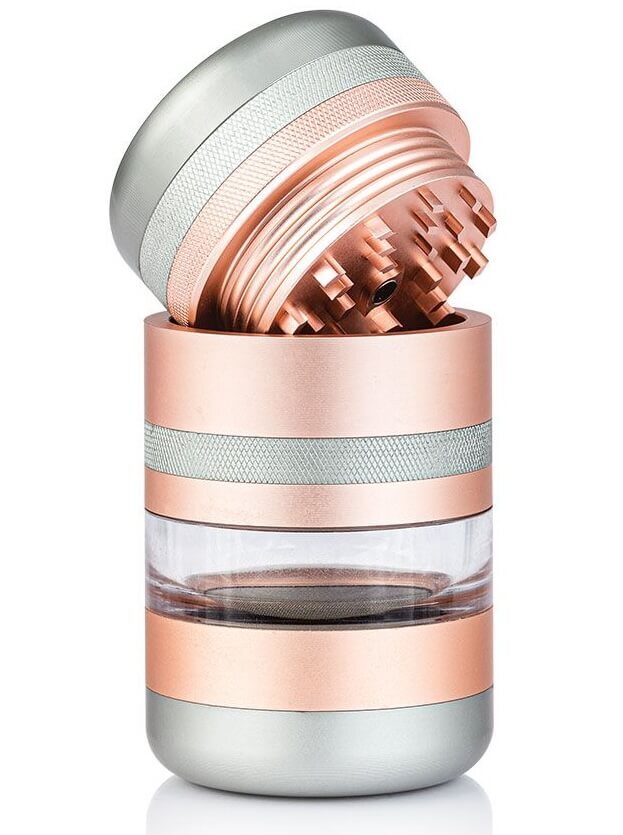
Modular, Removeable Chambers
I’m embarrassed to admit it, but after 14 years of regular pot smoking I just recently realized that a 4-piece grinder can often be converted into a 3-piece grinder through the removed of the kief screen piece.
Separating kief from flower isn’t necessary, and the option to do so or not is a neat ability that modular grinders offer. Four-piece grinders can be hefty, and removing the kief screen portion reduces the size of the overall herb grinder while also allowing the flower to retain more potency with the combination of both kief and flower post-grind.
Varying Sizes of Particle Screens
The incorporation of adjustable particle screens between the grinder chamber and collection reservoir, even kief screens is a premium feature that adapts to your needs. Bowls need a thicker grind while joints and blunts can benefit from smaller particles to reduce the chances of air pockets. Adjustable particle screens keep the flower in the grinder chamber longer when particle holes are small and shorter when particle holes are larger. Additional options to adjust or incorporate more kief screens just adds to the control over the final ground product.
The preference could depend on the style of smoke sesh or simply the preference of the user at that particular time. Regardless, the option to adjust and add particle screens is wicked.
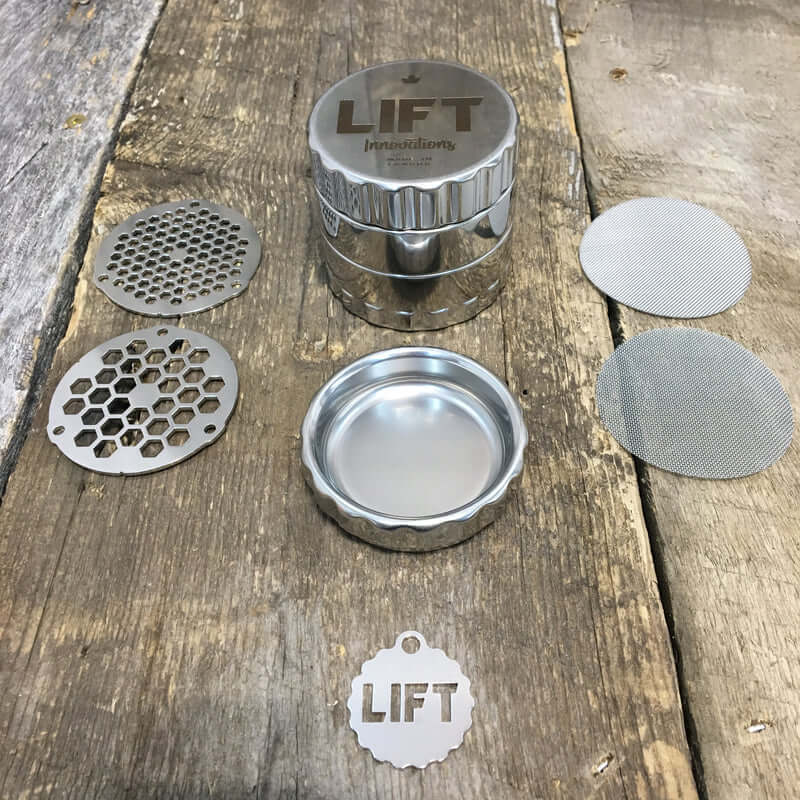
Storage Chambers
As mentioned, 5-piece grinders come with the addition of a storage chamber. While the chamber beneath the grinder acts as a reservoir to catch and store ground flower, an additional chamber offers flexibility in situations where you’d prefer to store more ground flower.
Maybe you want more ground flower prepared for later, or maybe you are rolling a big ol’ blunt and need to store your ground weed while you grind more. Either way, an additional chamber is a sick addition to any grinder!
Ashtrays
Incorporated into the outer top portion of the top grinder piece is – say what? – a built-in ashtray! An ashtray is necessary at times and let’s be real, no one carries around an ashtray on the regular. One reservation expressed by smokers is the possibility of ash getting inside the grinder: ash pollution, oh my!
But this can be avoided by closing the grinder and being a little careful. Simple, eh?
Airtight, Smell Proof & Waterproof Seals
Pot is dank and is better dried, but not dried out, which brings us to the enhanced functionality of seals within the grinder. These features come in different styles and material and are perfect for keeping your weed safe, fresh and private; no more dank aromas giving you away! Secure seals between chambers? Now that’s really tight.
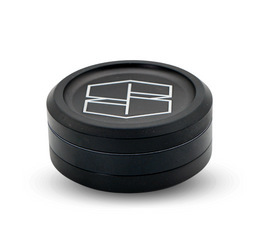
Slim
Grinders come in all shapes and sizes, but beyond the traditional big or small measurement comes the slim grinder, no matter the diameter. Slimmer pieces and smaller chambers make for a more portable apparatus.
Slim can take on a new meaning when you use grinder mechanisms like a mill or short-toothed grinder that have small gaps between the two pieces of the grinder chamber, compared to larger-toothed grinders that require the gap to be as large as the teeth are tall. Regardless, large-toothed grinders can be made slim by reducing the height of the remaining chambers and while the ground cannabis reservoir in slimmer grinders is smaller, they can hold a surprising amount of bud!
Card Grinders
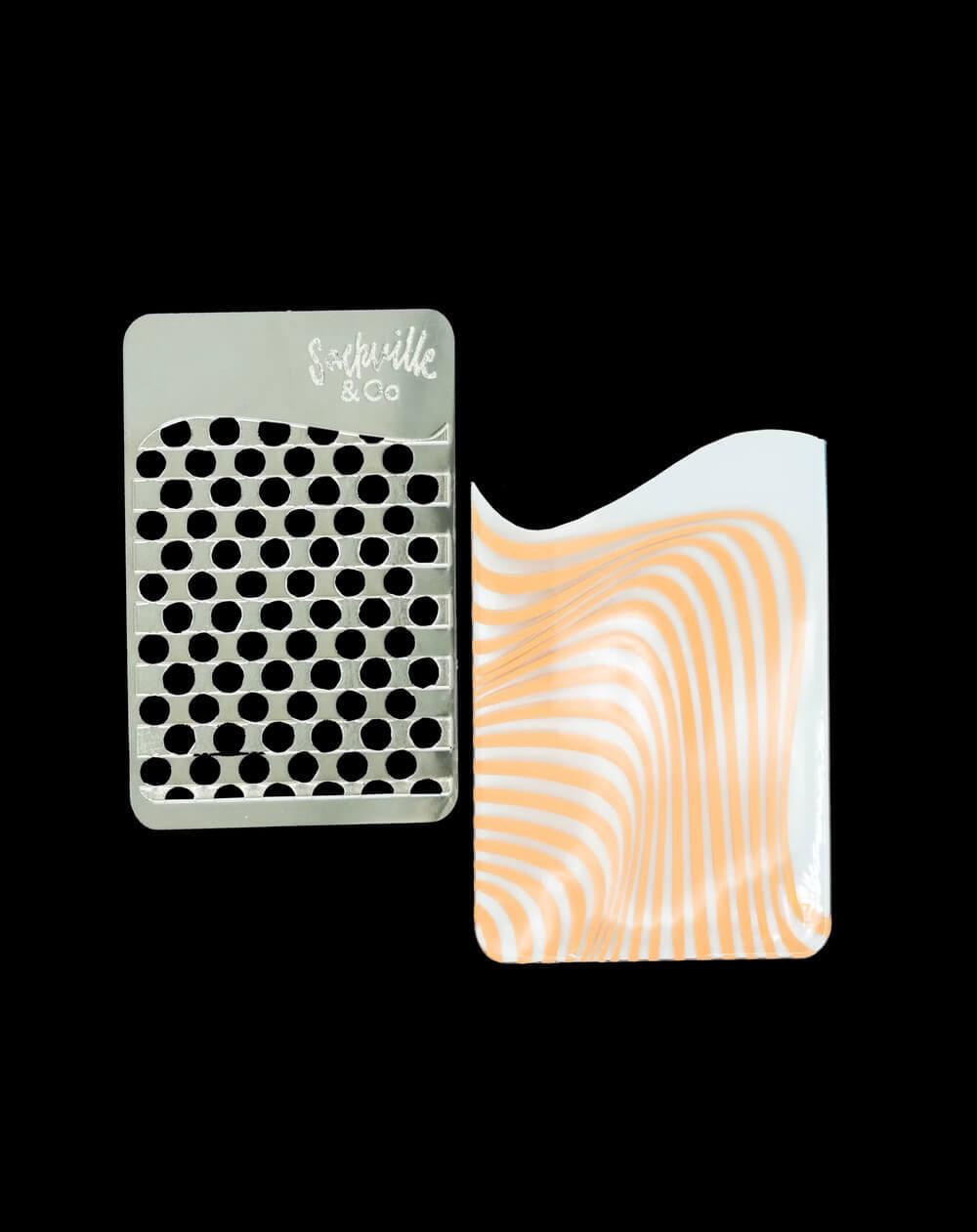
The size of a credit card and the perfect addition to the wallet of a toker is the card grinder, the ultimate back-up when a full size grinder is nowhere in sight. By rubbing the bud with some pressure against the grated metal card, you’re able to shred your buds into smaller particles in a quick and convenient manner. Some card grinders even come with a thin sheath to protect your wallet from the potential of grate scratches on your wallet.
It’s similar to a flower mill in that the cannabis is not shredded by teeth, but fits easier in your pocket or purse.
Cranks
While not the most exciting feature, cranks atop a grinder replace the threadless rotation of the grinder chamber with the turn of a manual crank, offering an alternative to the traditional grinder for those who either prefer it or benefit from it due to physical constraints. The main sell of the crank is ease of grinding, but grabbing a small knob compared to a wider chamber piece will not be for everyone.
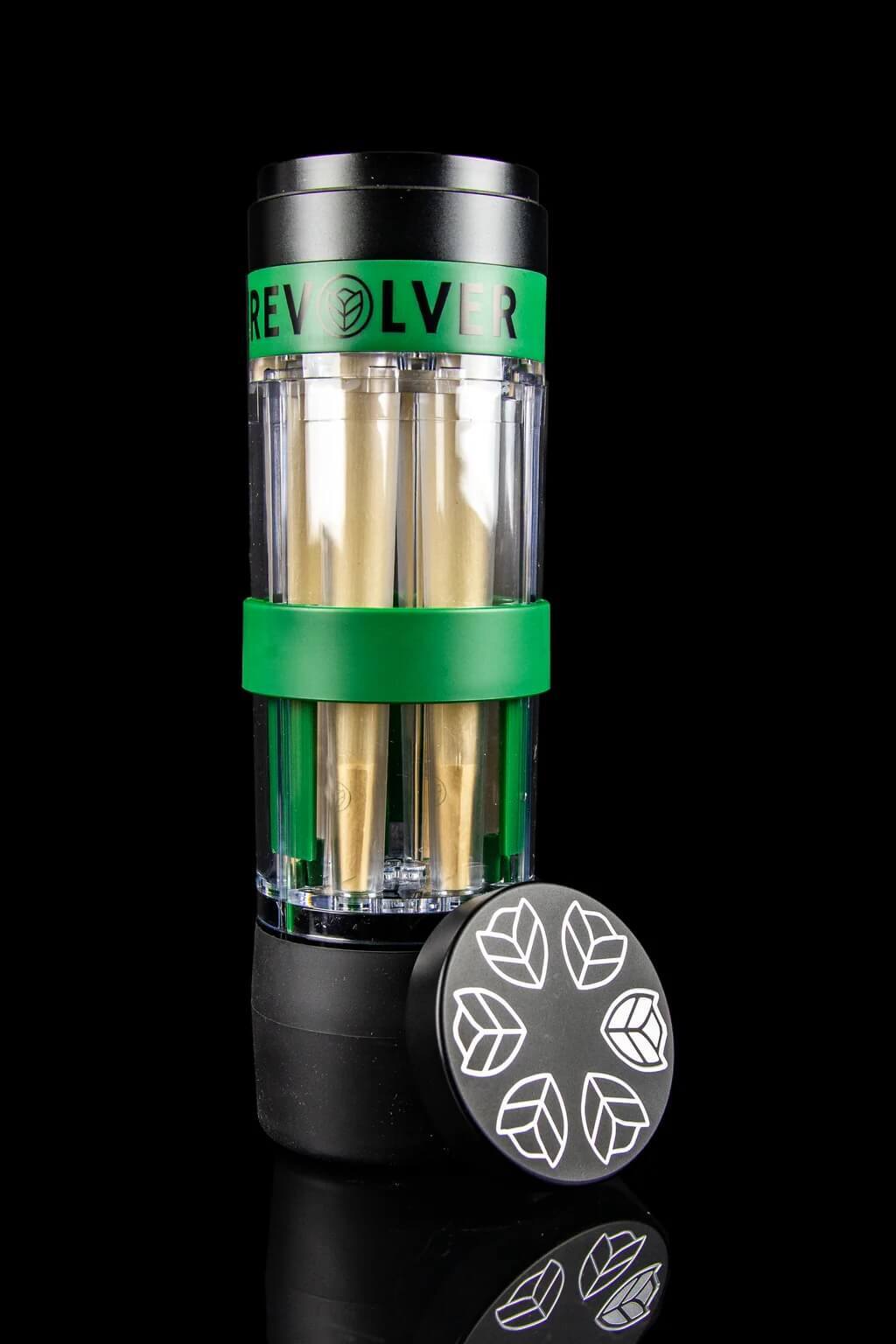
Cone-Filling Weed Grinders
More functionality, you ask? You’ve got it: a grinder with an attached tube to fill pre-rolled cones with the freshly ground flower. They’re pretty neat and if you’re going to pack a pre-rolled cone or tube, why not fill it at the source quicker and more conveniently? And get this, some pre-roll filling grinders have a vibrating base to tamper down the particles for an evenly packed joint. Bulky yes, but certainly functional and fancy.
Stealth
Grinders that present as everyday random items like a stack of poker chips, a hockey puck, or even a watch take discretion to a whole new level. Imagine a 2-piece grinder on your wrist disguised as a watch that has a detachable face to expose a lower grinder portion with the bottom of the watch face acting as the top grinding portion.
Well ok then, now I’ve seen everything.
There are grinders out there that appear to be the Death Star from Star Wars but are actually just round painted grinders, there are even pill bottle- and candy container-veiled grinders. Yowzah, what will they think of next?
Ceramic Coating
Grinders coated in ceramic offer a bundle of benefits due to the nature of ceramics. The non-stick property of ceramic means less grinder hash and buildup around the blades. Resistant to scratches, non-stick and non-reactive (resulting in easier maintenance and no unwanted odor or flavor transfer), and generally easy to maintain, the ceramic-coated grinder is a luxurious option that pushes the world of grinders into the future. But as we mentioned earlier, where there is cannabis there will eventually come the time to clean your equipment and a ceramic coated grinder is no different, though the cleanings will surely be less frequent.
In addition to easy cleaning provided by the non-stick properties of ceramic is the preservation of cannabis quality due to a decline in damage to trichomes. The oils and resin from the plant can build up when trichomes are broken open, causing sticking of the teeth and seals, so the preservation of trichome integrity offered by ceramic coated grinders adds another layer of innovation to the herb grinder.
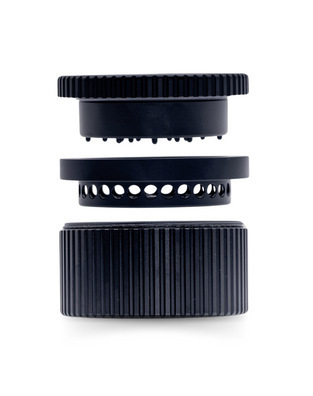
Additional Side Particle Holes
The inside walls of weed grinders, especially grinders with teeth, are susceptible to build up of grinder has and green gunk, the dreaded stickiness from the plant oils that lock up the rotation and/or threads.
But a clever feature has been developed, incorporating side holes and a gap between the top grinder piece to allow ground flower of the appropriate particle side to escape into the reservoirs through the inner walls of the grinder chamber. These walls, as well as the exterior walls that rotate alongside the top piece, are the most susceptible areas to build up, making this innovation in grinder technology one for the books.
How to Clean Your Weed Grinder
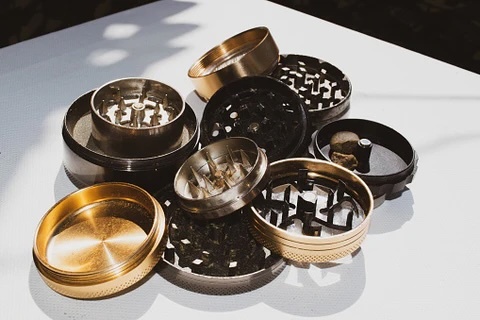
There is no point in running a grinder to failure. The smooth rotations go away, pieces are harder to open and close, and the frustration that comes when a grinder grinds to a halt can make the most carefree person frantic. But it doesn’t have to be that way. Remember, the buildup is just concentrated cannabis compressed onto the walls and teeth of your grinder. You can preserve the buildup for a potent addition to your next sesh, or you can break it down with solvents.
The first step in cleaning your grinder is finding a temporary home for any ground bud and kief stored in your grinder. Get out as much as you can, but remember, we are cleaning the grinder and not all can be saved. Kief will not always be easy to remove as the particles can become stuck to the kief chamber. Use a small scrapping tool with a flat edge to separate the kief from the kief chamber because, you know, kief is naturally sticky.
Next, use a thin poker to dislodge any remaining bud that may be stuck in the particle holes or teeth or the grinder. The pre-clean doesn’t have to be too intense, but why waste weed right?
To further retain the high potency buildup, try putting your grinder in the freezer for 30 minutes to an hour. When put in freezing temperatures, bonds are weakened making removal easier. After you’ve been reunited with your now chilly grinder, chip away at the sticky, compressed flower and kief, as the compacted material will now be more brittle and easier to chip off.
These steps will do wonders for your grinder if the buildup was getting serious, but it’s nearly impossible to end up with a clean grinder with only your hands and a poking stick. Employing additional cleaning agents that have the power to breakdown the buildup will take your grinder from sticky and rough to smooth and easy to turn. When cleaning your grinders or glass for that matter, a container capable of submerging your grinder is valuable for holding liquids that can breakdown the grinder hash when soaking your grinder. Additionally, paper towels, cotton swabs, a poker stick, and a small brush like a toothbrush will come in handy when scrubbing down your grinder no matter the method you choose.
Isopropyl Alcohol
Since resin and cannabis oils are hydrophobic, meaning they are water resistant, a simple clean with water, even hot water, will be very difficult. A solvent that has the power to breakdown this sticky build up is ideal for this type of cleaning, and isopropyl alcohol is the most commonly used solvent for cleaning grinders, as well as glass pieces such as pipes or bongs. The isopropyl alcohol, or IPA, dissolves the sticky residue over time, and the longer the IPA can coat the buildup, the easier it will be to clean. As for strength, 70% comes in on the low end of effectiveness for grinder cleaning, while anything above 90% is ideal and 99% will get the job done with force!
There are multiple ways to use IPA for cleaning a grinder, but the general idea is to have consistent contact between the buildup and the isopropyl alcohol. Submerging your grinder pieces into a container or baggie allows for full coverage and the ability to soak for as long as you’d like, but if you don’t have the right sized container, a great deal of isopropyl may be needed to fully submerge the grinder pieces.
Pouring IPA on your grinder pieces can be helpful, but since iso evaporates quickly, a thin layer of IPA spray will be gone before the job is done. But spray bottles containing iso work great for controlling the application and conserving your supply of isopropyl, simply mist the grinder pieces and let them sit, the continued application will keep the solvent present and slowly breakdown the sticky buildup in the grinder.
While most of the sticky plant matter will break free from the grinder as the solvent does its job, some agitation may be required to remove build up that was really stuck on there. Employing cotton swabs to clean threads, teeth, particle holes and everywhere in between will make getting into tight spaces easier. The remaining build up should be easy to wipe away, and if you encounter areas where the compacted kief still holds on, simply break out the IPA, give the area an additional coating, wait, then repeat the steps described below. Dipping cotton swabs in iso prior to cleaning will help strip away the buildup.

Isopropyl alcohol works best on metal grinders but can also be used on glass. In cases where grinders incorporate natural materials in their build like hemp or wood, IPA can actually damage the integrity of the materials by drying them out, warping them, and cracking them. Additionally, a strong solvent will affect the binding agents used to form the hemp derived grinders, weakening the bonds of the natural glues and adhesives while compromising the integrity of the grinder’s build.
When you’ve gotten your grinder to your desired level of clean, simply rinse and dry your grinder for a smooth start to your next sesh.
Alternative Cleaning Methods
Non-metal grinders require special cleaning practices as mentioned before, but even water can take them out. A mix of warm water and soap can be used to soak and scrub your grinder to breakdown the buildup. And though this method will be less effective in blasting away the grinder hash than when using IPA, it is an accessible option that just requires more time and effort to achieve the level of clean you’re looking for. But make sure that your water isn’t too hot as acrylic will melt, plastics will warp and skin will burn.
Baking soda and vinegar are natural cleaning agents that can help remove kief build up and residue. Simply soak your grinder pieces in an equal mix of warm water and white vinegar for 30 minutes, then cover your grinder in a thin layer of baking soda. The combination of soaking, chemical reactions, agitation and natural cleaning properties makes this method of cleaning a solid option.
For metal grinders, boiling can be another alternative method to dissolve and breakdown the sticky residue. Boil the pieces of your grinder for 10-15 minutes. You may be left with a pot full of cannabis residue, but for those that boil their grinders and pieces clean, a dedicated cleaning pot is often not too far away.
For plastic and acrylic grinders, lemon juice can be effective by simply creating a paste with backing soda and using a brush to work the grinder clean. Toothpaste can also be used in a similar fashion.
Wood grinders are unique. They are porous and prone to wear, so a gentle option is needed. Enter warm water and a towel. After you have gotten out as much flower and kief from your grinder to save for later, pull out your damp cloth and get to work.
This process is similar for cleaning electric grinders as well: a damp towel and a side of Iso. Unplug and disassemble your electric grinder, including the lid, blades and any other removable parts. Use a brush and scrapper to chip off thick pieces of compressed kief, and after, soak or clean non-metal components with a gentle option previously stated, like soap and water. For metal pieces, submerge those pieces in a bath of iso for an easy clean and finish them all of with a wipe or rinse, making sure the components are dry before reassembling.
Always remember the Golden Rule: keep your grinders clean.
Highlighting Quality Grinders on the Market
- The Mill Grinder by Flower Mill
- The Tough Stainless Steel Grinder from Brilliant Cut Grinders
- The Rounded Micro-Teeth Grinder by Stache
- The Classic Teeth Grinder by Santa Cruz Shredder
- The High Class Titanium Grinder by CAPU
- The Modular Grinder from Kannastör
- The Smooth Threadless Grinder from Odin Grinders
- The Quick Electric Grinder from Pulsar
- The Simple Single Chamber Grinder from Phoenician Grinders
- The Always-on-My-Person Card Grinder from Sackville
- The Beautiful Glass Grinder from Houseplant
- The Wickedly Awesome Hemp Grinder from Stache
- The 2-in-1 Integrated Cone Filling Grinder from The Revolver
- The Low Cost Acrylic Grinder by Grasscity
- The Natural Wood Grinder by RAW
- The Easy-to-Clean Ceramic Coated Grinder from Blue Bus Fine Tools
- The Adjustable Particle Screen Grinder from Flower Mill
How to Choose the Right Grinder
Individual preference is the primary factor that should be taken into consideration when deciding which style of grinder is right for you. Let’s take a brief look at things to consider.
How the Grinder Will Be Used: Bowls? Blunts? Joints? Specific methods of smoking benefit from certain particle sizes, joints a medium to fine grind, medium sized particles for blunts, bongs and bubbles, and a courser grind for pipes.
Physical Size and Capacity: Grinders come in many sizes. If you’re using a grinder at scale, go for a biggie, but for the average toker, a medium-sized grinder will usually hold enough for your needs.
Small grinders are, well, small, but they are a good option for portability and for the infrequent smoker, but they can become a nuisance if you’re having to grind flower over and over again to get the amount of ground herb you need for your session.
Number of Chambers: Two-piece grinders offer a single grinding chamber, 3-piece include a reservoir chamber to capture the ground flower, 4-piece grinders include a kief catcher, 5-piece grinders can include an additional kief screen, storage compartment, or even an extension that adds height to the ground flower reservoir for more capacity. 6-piece grinders and up can include a combination of grinder pieces that go beyond the standard 4-piece grinder setup.
Again, this comes down to personal preference and usage.
But remember, many multi-chamber grinders are modulated, meaning you can adjust the build to your liking. If you only need a basic grinder to pack away, simply disassemble your 4 piece grinder, remove the kief screen, attach the cannabis collection piece to the top two grinder pieces for a simpler, more compact 3-piece grinding tool. This ability extends to 6+ piece grinders as well, with so many chambers, why not have the option to remove some.
The Grinding Mechanism: Whether a sharp-toothed grinder, a blunt-toothed grinder, a mill or an electric grinder, the goals are the same but the functionality differs. Personal experience using these varying grinding methods is the best way to know which mechanics are right for you.
While the quality of the grind is important when making this decision, also consider the upkeep. Toothed grinders break up the trichomes, leaving behind sicky residue with each grind that builds up much quicker than in mills that use a rotary mechanism and screen, for example. Because flower makes less surface contact in a mill due to the grind chamber being void of teeth, cleaning a mill is easier than cleaning a grinder with teeth.

What the Grinder is Made Of: Stainless steel, low- or high-grade aluminum, titanium, glass, plastic, acrylic, ceramic coated or hemp; how do you choose? While stainless steel titanium, and aerospace aluminum are high grade and durable, they cost far more than a simple 2-piece acrylic grinder.
Metal grinders are the easiest to clean, but because of their price point, plastic grinders can be replaced over and over again before they reach the cost of a high-quality metal weed grinder. Define your needs, get comfortable with how each material performs and is cleaned before making your choice and showing those nugs who’s the boss.
Consistency and Desired Particle Size: Adjustable particle screens are great, but finding a grinder that has your desired particle screen size built into it work just fine too. A consistent grind and particle size are important when it comes to the quality of the smoke, so you’ll want to make sure you’re leaning into what makes sense for you and your grind preference.
Brand Affiliation: Whether we’d like to admit it or not, brand names can influence our perception of a product before it has been tried out. That isn’t necessarily a bad thing when you know the reputation of a brands product, but sometimes brands will expand beyond their standard product lines without the expertise on the product you’re looking for.
For example, a low-grade aluminum grinder with a familiar logo on it doesn't make the grinder a premium option. However, aesthetics are important as well and sometimes a brand’s line will catch your eye so much that you into a brand loyal customer. And if that brand’s grinder also meets your needs on particle size and cleaning, you’ve found a compatible partner in crime.
Available Features: Think about what you need from your weed grinder. An extra storage compartment can be an awesome feature in your next grinder, providing a place to easily store ground flower for your next session. Do you plan on using it to grind flower for different consumption methods? Then an interchangeable screen might provide the best option to give you a larger grind for bongs and a finer grind for pre-rolls. The quantity of chambers that can also be adjusted in modular grinders, providing kief catchers and even ashtrays.
Is this a travel grinder or something you need to fit in a tight spot? Then a slim grinder might meet your needs, so find the best slim grinder you can find within your budget. On the other side if you’re looking for something fancier to hold down your stoner kit with the most chambers possible in your grinder, look for grinders with 6 pieces of more. No matter the feature, if you like it, it’s worth it.
And, of course there are electric options as well if you’re tired of all this twisting by hand.
Color and External Design: Color doesn’t enhance or degrade the performance of a grinder, but that’s not to say it shouldn’t matter when choosing a weed grinder that’s right for you.
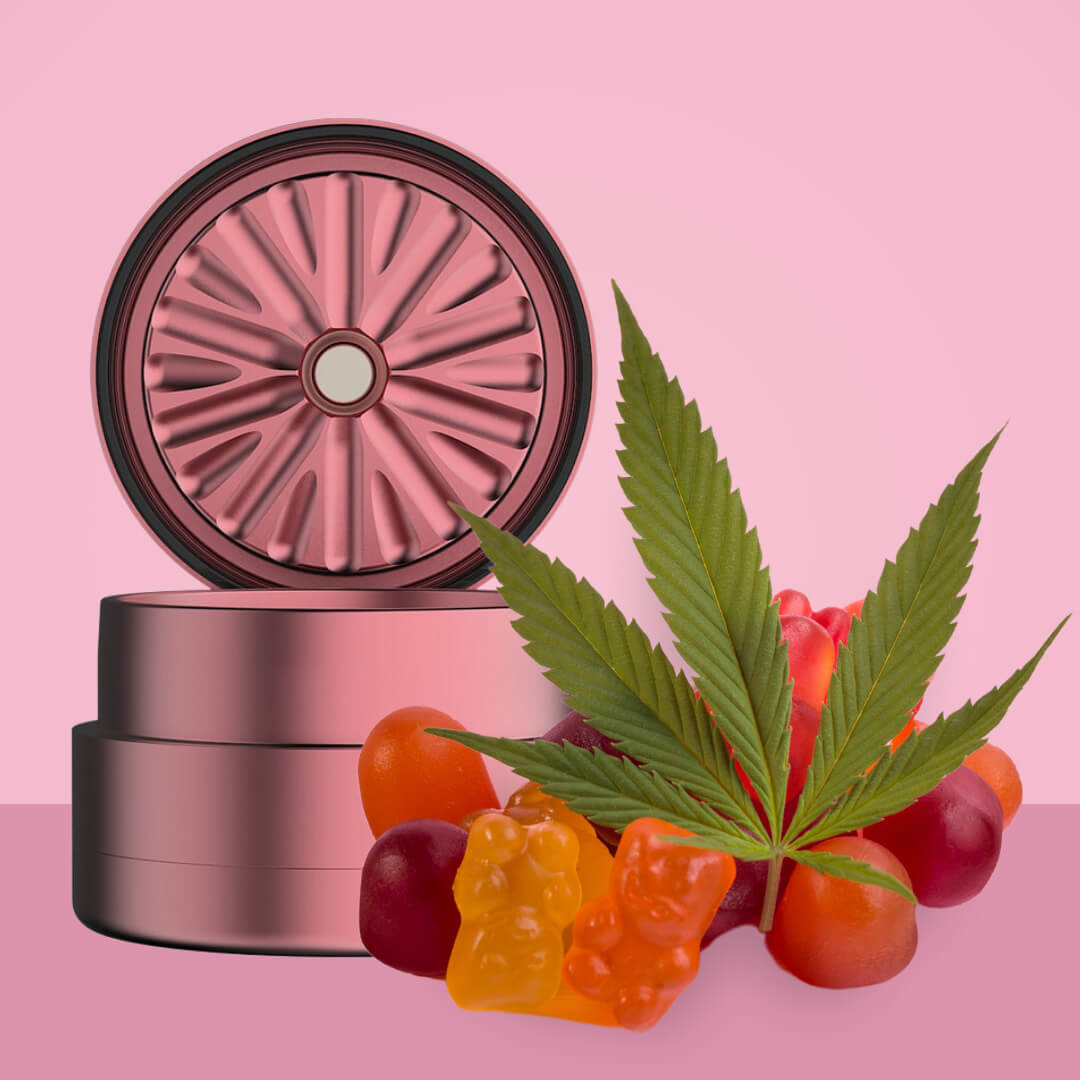
However, certain materials are more capable of carrying color than others. Anodized aluminum is a quality option that boasts a wide range of colors while stainless steel grinders come in standard chrome. Plastic and acrylic can be customized into almost any color you’d want, but again, those materials may not always provide you with the ultimate grinding experience, despite looking good.
External design affects this decision in both function and appearance. Smooth grinders can be hard to grip, while textured exteriors can offer a way to get a firmer grip. Grinders can come in many shapes and sizes from a square to a sphere, and while performance should be the top priority when choosing a grinder, a cool exterior can go a long way. So don’t settle. The perfect combo of form and function is out there to meet your weed grinder needs.
Word of Mouth: Sometimes there is no better feedback than someone who has used a product. If three friends who smoke regularly are preaching a certain grind style, brand and overall build of a certain grinder, it might be worth heeding that advice. But trusting the opinions of others can be a bit trickier if you’re not confident in their experience with grinders. For example, someone who has only used a single grinder in their life will probably have less information to share than someone who has tested a wide range of grinders to find the optimal cannabis shredder.
Our advice? Listen to an expert and then go with your gut.
Price Point: We may not want to admit it, but cost is always a factor.
As mentioned, high-grade stainless is going to be much pricier than low grade aluminum or plastic. So understand how you will be using your grinder and do your research; you’d be surprised how many grinder brands that are out there that have awesome products at an attainable price point.
And there’s no point spending the extra coin if you don’t need the features of a spendy grinder. Yes, a grinder can come with a hand crank, but do you really need it? No? Then don’t pay for it. Threadless grinders add a unique touch to the operation process, but is spending more money worth it to you to eliminate the process of unthreading one piece from another? You need to be the judge of that.
How to Grind Weed Without a Grinder
Let‘s end back at the beginning: you’ve got nugs that need to be broken up and because you’re here reading about how to choose the right weed grinder for your needs, we can assume you don’t have one yet or are in a situation where your grinder is unavailable.
So how do you grind weed without a grinder?
First, let’s be clear: these alternatives are not ideal for regular or daily grinding, but they will surely help you out when you are without your favorite grinder.
Hands/Fingers/ Nails: Simply pull apart buds into smaller and smaller pieces using your fingers, you can even rub your hands together after to allow the kief that sticks to your hand to fall off, providing you with extra fire power.
Knife and Cutting Board: Snag some bud, place it on a clean cutting board, and use a sharp knife to chop the buds into smaller and smaller particles like a Top Chef contestant until you’re satisfied with the consistency of your now ground flower.
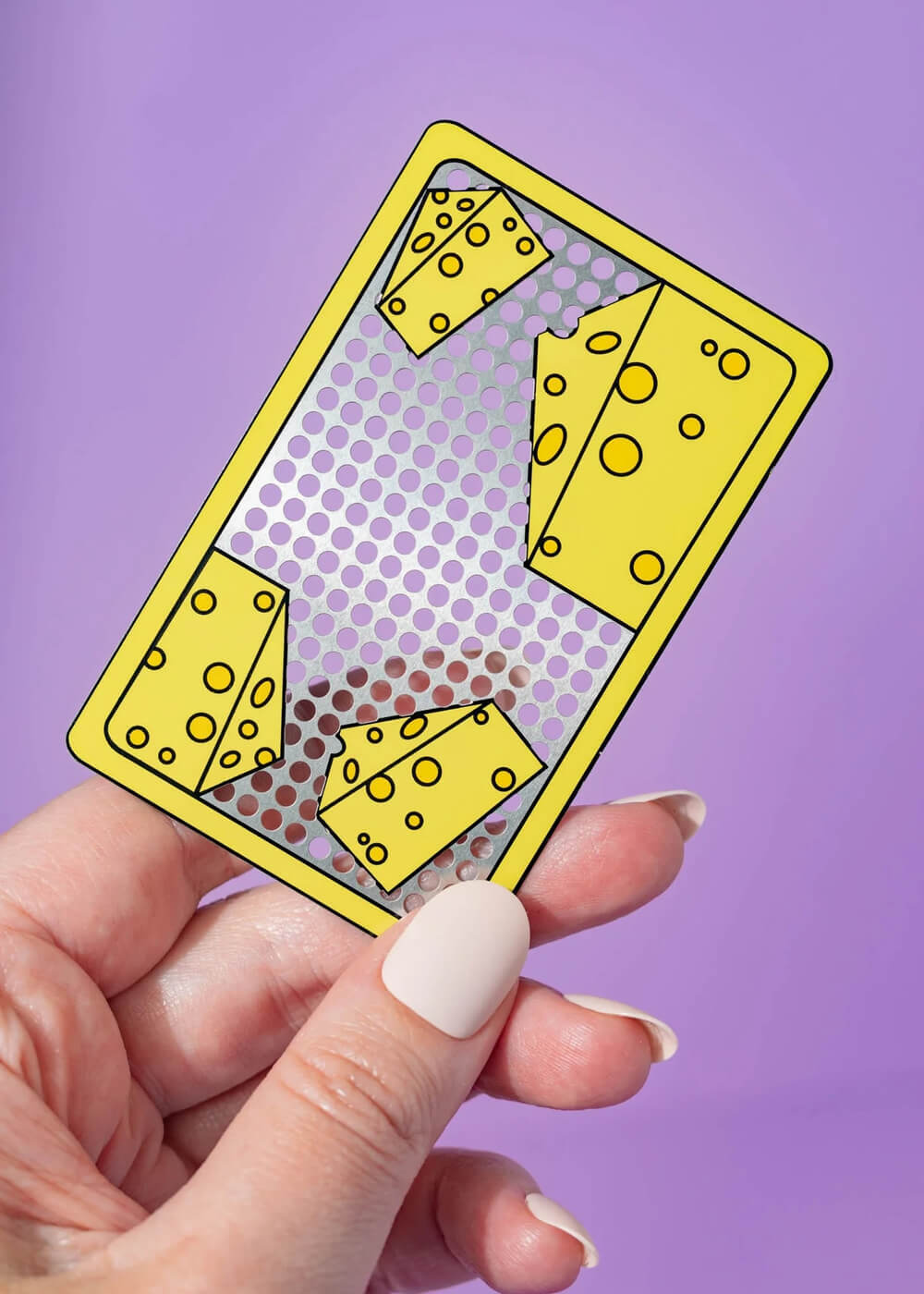
Coffee Grinder: Just like coffee, the longer you process your flower in a coffee grinder, the smaller the particles will be. We advise pulsing the coffee grinder in short spurts so that you can better manage the final particle size, because cannabis dust is far less enjoyable than a pile of properly ground bud. Though not ideal because the heat generated can damage the trichomes in your flower, a coffee grinder will certainly get the job done in a pinch.
Scissors and a Glass: Place your weed into a clean cup and use the scissors to snip away at the buds, creating smaller and smaller pieces with every snip. Make sure to agitate and lightly shake the glass on occasion so buds and particles aren’t being missed, which will result in a more uniform grind.
Grater: Similar to the functionality of the card grater (and a flower mill, really), cheese graters are an excellent alternative to the classic grinder. Using the smallest holes on your grater, gently rub the cannabis along the grooves the same way you would cheese. But remember, cannabis is softer and requires less pressure than a block of cheddar.
Coin and Pill Bottle: And finally, the classic coin-in-a-pill-bottle method. The process is simple. First, place your cannabis buds into a pill bottle with a clean coin, a dime or nickel will do. Now, shake the bottle vigorously for about 45 seconds. When finished, check on the particle size of your bud. If it needs a little more attention, repeat the process. But if it produced an even grind, well boy howdy, it’s time to get your smoke on!.
Final Thoughts on Weed Grinders
And there we have it: everything you need to know about weed grinders but were afraid to ask.
Whether you’re a two-stager, a six-stager, a kief-collector or skip it all for an herb mill, finding the right weed grinder for your stoner kit may take a little time, but once you lock in your favorite, your whole smoking experience - especially your pre-roll packing or blunt rolling experience - will get more consistent, taking each session to the next level.
Pencils need sharpeners, basketballs need air pumps, and cannabis needs grinders.



